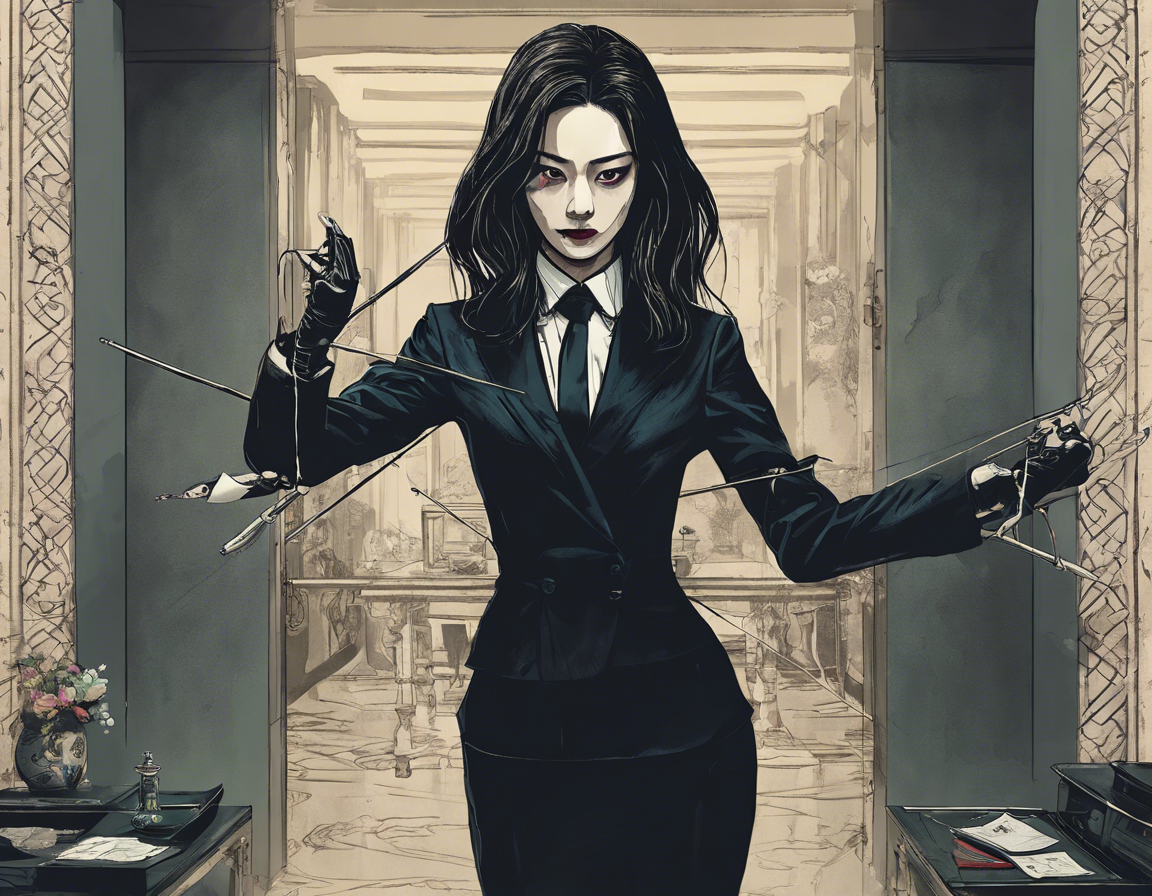Introduction
In the vast landscape of literature and film, the villainess has consistently held a captivating and complex role. Often portrayed as cunning, manipulative, and shrouded in mystery, the villainess has become a figure that simultaneously repels and fascinates audiences. In this article, we will delve into the multifaceted world of the villainess, dissecting her character, motivations, and impact on storytelling. Specifically, we will focus on the unique archetype of the villainess as a marionette, a character who pulls the strings behind the scenes with calculated precision.
Defining the Villainess
Before we explore the intricacies of the villainess as a marionette, it is essential to first understand the broader concept of the villainess archetype. The villainess is typically characterized by her intelligence, resourcefulness, and willingness to act outside societal norms to achieve her goals. Unlike traditional villains who may rely on brute force or overt displays of power, the villainess often operates with subtlety and charm, using psychological manipulation and strategic planning to further her agenda.
The Villainess as a Marionette
In literature and film, the villainess as a marionette embodies a particularly intriguing iteration of this archetype. Just as a puppeteer controls the movements of a marionette with delicate precision, the villainess as a marionette exerts her influence over the narrative with meticulous planning and calculated maneuvers. She is a master of manipulation, pulling the strings behind the scenes to orchestrate events to her advantage.
Characteristics of the Villainess Marionette
-
Manipulative: The villainess as a marionette excels in the art of manipulation, using deception and cunning to bend others to her will. She is a master strategist, always several steps ahead of her adversaries.
-
Charismatic: Despite her nefarious intentions, the villainess marionette often possesses a magnetic charisma that draws others to her. Her ability to charm and manipulate with words makes her a formidable adversary.
-
Complex Motivations: While the villainess as a marionette may initially appear as a one-dimensional antagonist, her motivations are often multifaceted. She may have endured traumas or injustices that have shaped her worldview and drive her actions.
-
Emotional Depth: Contrary to the stereotype of the cold and callous villainess, the marionette archetype allows for exploration of her emotional depth. She may grapple with inner conflicts and vulnerabilities that humanize her character.
The Impact of the Villainess Marionette on Storytelling
The inclusion of a well-crafted villainess marionette can elevate a story to new heights, adding layers of intrigue and complexity to the narrative. By pitting her against the protagonist, creators can explore themes of power, morality, and deception in compelling ways. The presence of a villainess marionette challenges traditional gender roles and stereotypes, showcasing women as formidable and intelligent adversaries.
Frequently Asked Questions (FAQs)
- What sets the villainess apart from traditional villains?
-
The villainess often operates with subtlety and charm, using psychological manipulation and strategic planning to achieve her goals, whereas traditional villains may rely on brute force.
-
Can a villainess be redeemed in the eyes of the audience?
-
While redemption arcs for villains are not uncommon, the path to redemption for a villainess may face greater scrutiny due to societal perceptions of women and morality.
-
What role does the villainess marionette play in challenging gender norms?
-
The villainess marionette subverts traditional gender roles by portraying women as intelligent, cunning, and capable of wielding power in unconventional ways.
-
Are there real-world examples of villainesses as marionettes in history or literature?
-
Historical figures such as Cleopatra and fictional characters like Cersei Lannister from “Game of Thrones” exemplify traits of the villainess marionette archetype.
-
How does the presence of a villainess marionette impact the dynamics between characters in a story?
- The villainess marionette often serves as a catalyst for conflict and character development, challenging the protagonist and other characters to grow and adapt in the face of her machinations.





